41+ Sample Bank Reconciliations
-
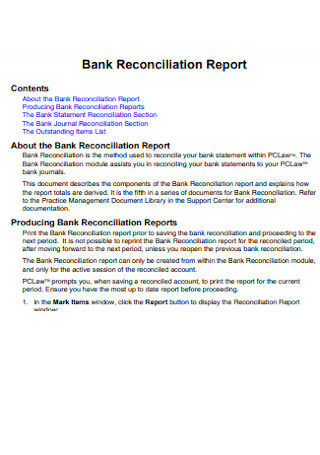
Bank Reconciliation Report
download now -
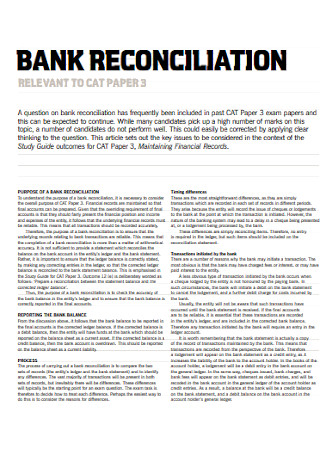
Bank Reconciliation Format
download now -
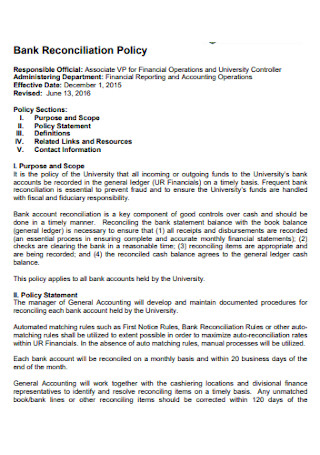
Bank Reconciliation Policy
download now -
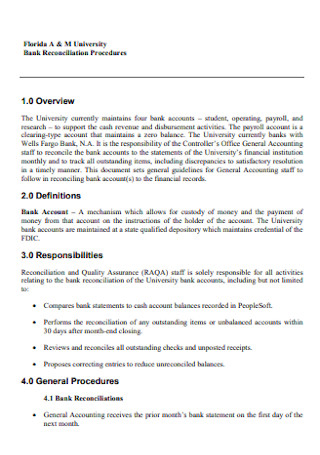
Sample Bank Reconciliation
download now -
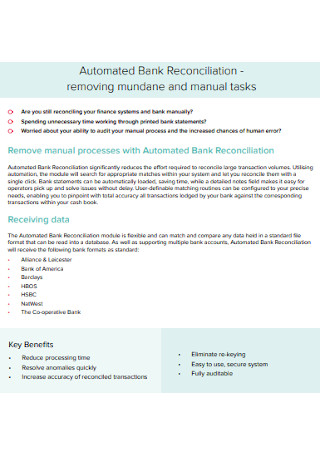
Automated Bank Reconciliation
download now -
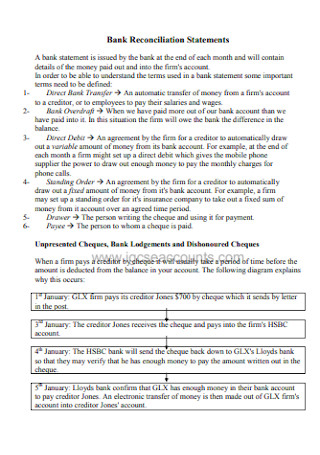
Bank Book Reconciliation Statement
download now -
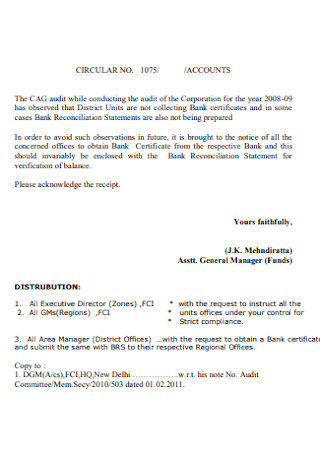
Basic Bank Reconciliation
download now -

Bank Reconciliation Statement
download now -
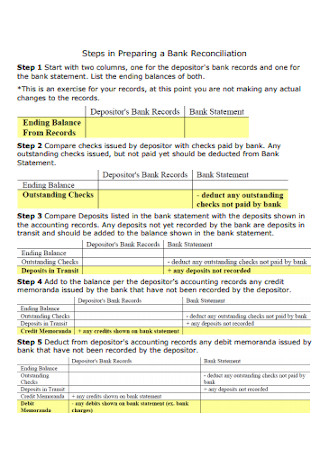
Simple Bank Reconciliation
download now -
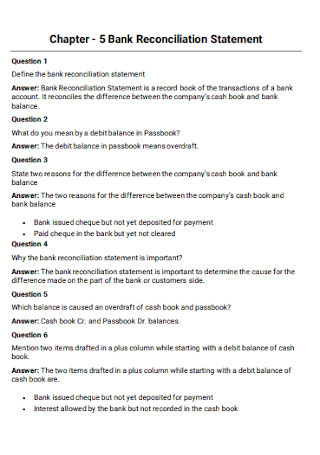
Bank Reconciliation Statement Format
download now -
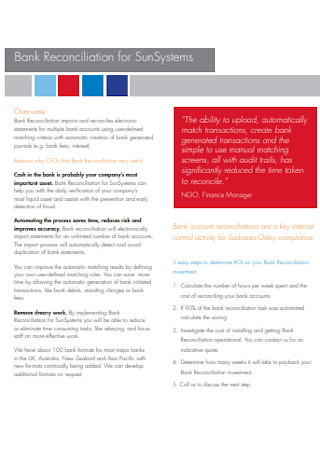
Bank Reconciliation for SunSystems
download now -
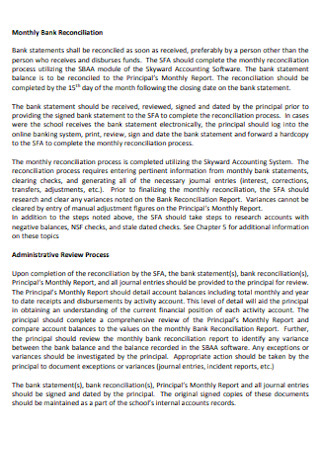
Monthly Bank Reconciliation
download now -
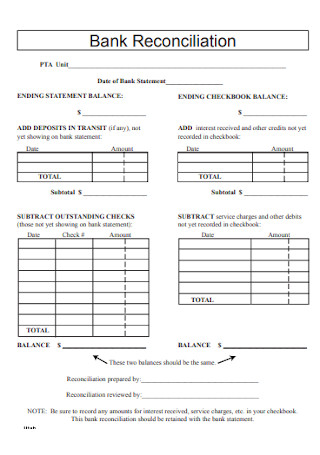
Formal Bank Reconciliation
download now -
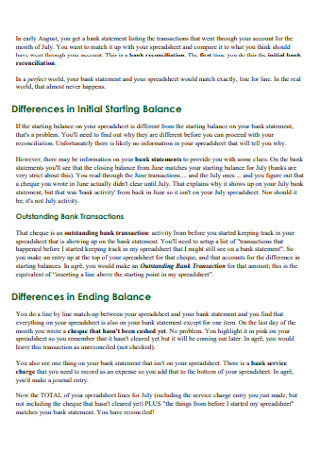
Initial Bank Reconciliation
download now -

Preparing of Bank Reconciliation Statement
download now -
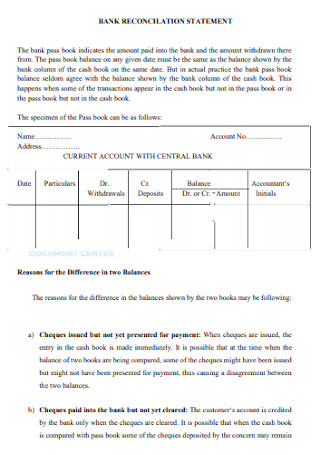
Basic Bank Reconciliation Statement
download now -
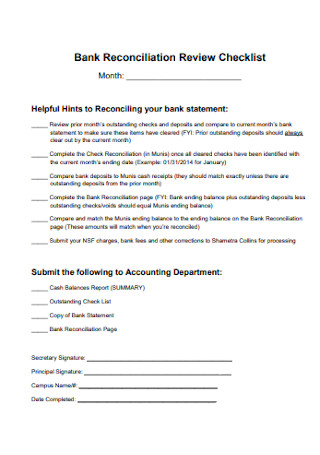
Bank Reconciliation Review Checklist
download now -
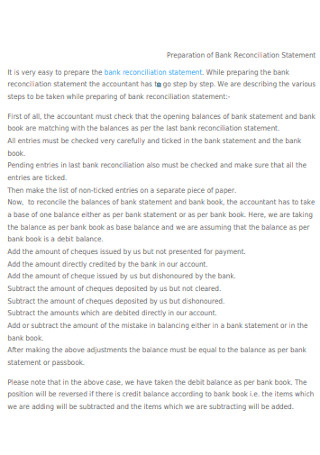
Preparation of Bank Reconciliation Statement
download now -
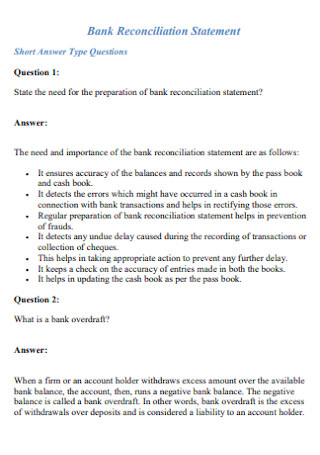
Bank Reconciliation Statement Template
download now -
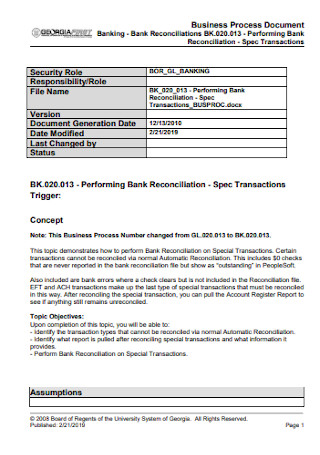
Business Bank Reconciliation
download now -
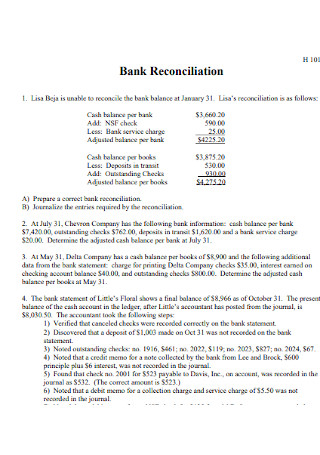
Standard Bank Reconciliation
download now -
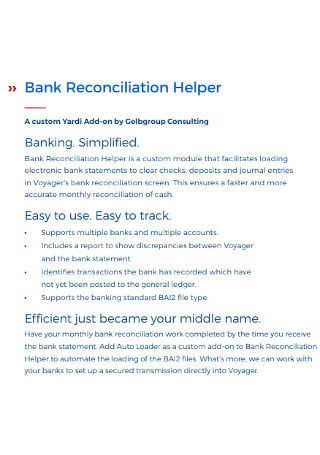
Bank Reconciliation Helper
download now -
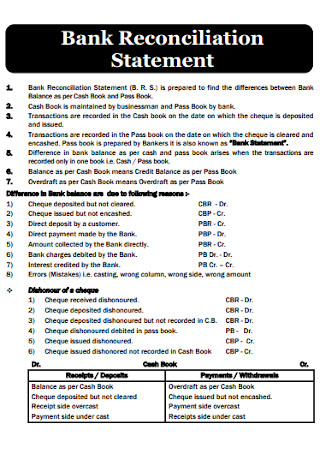
Standard Bank Reconciliation Statement
download now -
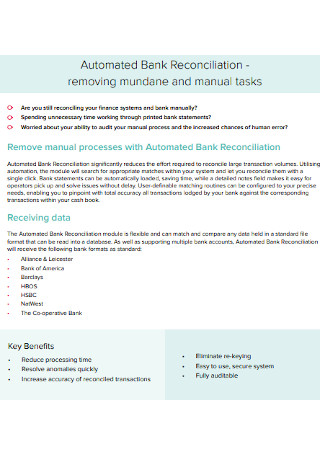
Automated Bank Reconciliation Statement
download now -
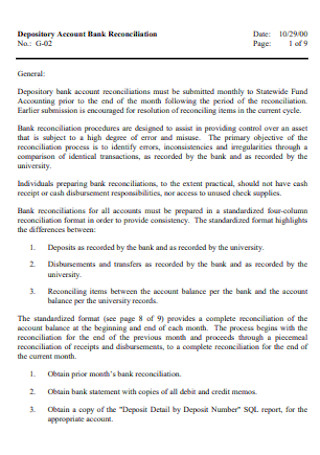
Depository Account Bank Reconciliation
download now -
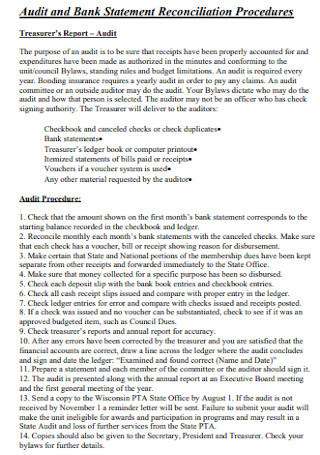
Audit and Bank Statement Reconciliation Template
download now -
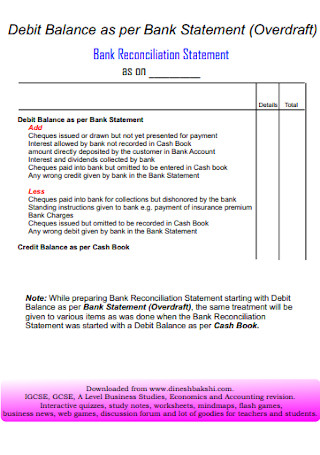
Bank Debit Balance Reconciliation Statement
download now -
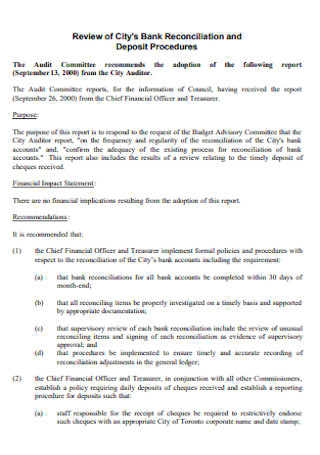
Review of Citys Bank Reconciliation
download now -
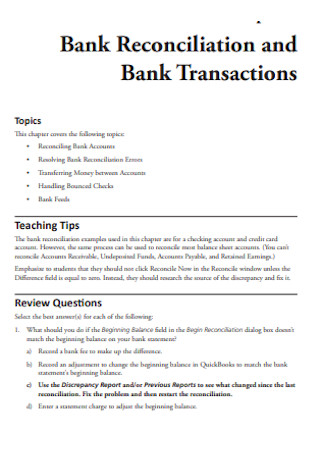
Bank Reconciliation and Transactions
download now -
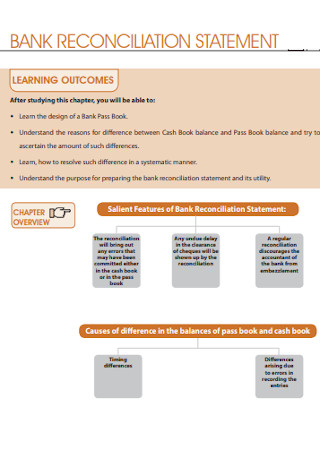
Formal Bank Reconciliation Statement Template
download now -
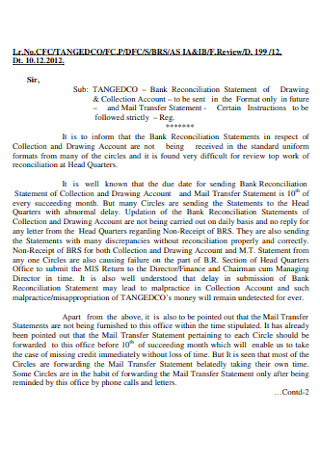
Bank Reconciliation Statement of Drawing
download now -
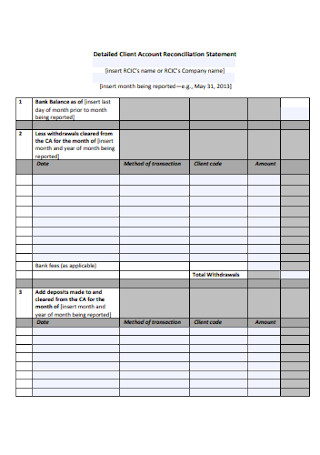
Detailed Client Account Reconciliation
download now -
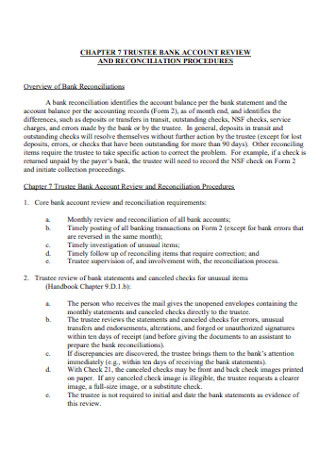
Bank Account And Reconciliation
download now -
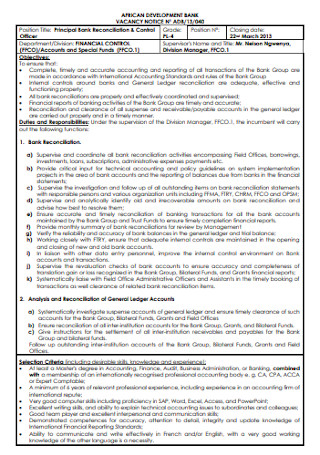
Principal Bank Reconciliation
download now -
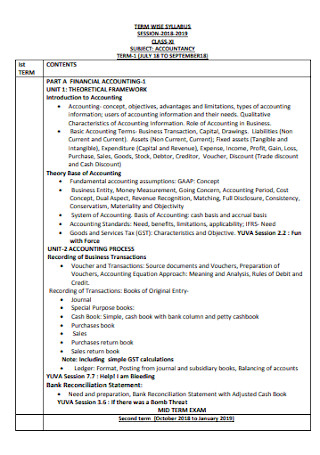
Bank Accounting Reconciliation Statement
download now -
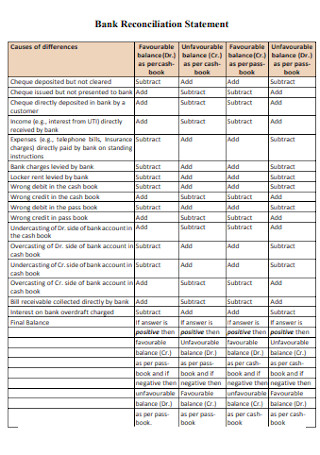
Bank Cash Book Reconciliation Statement
download now -
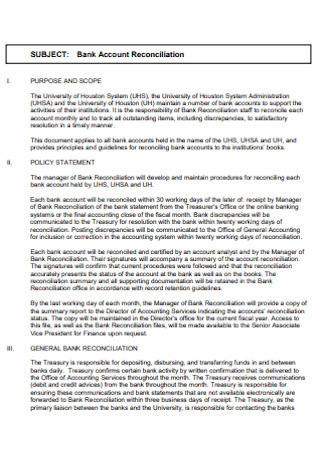
Financial Bank Account Reconciliation
download now -
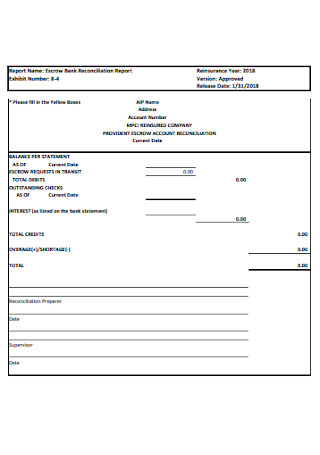
Escrow Bank Reconciliation Report
download now -
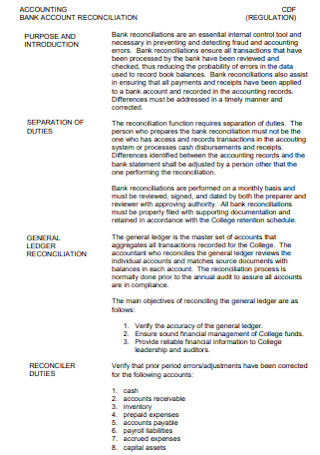
Standard Bank Reconciliation Example
download now -
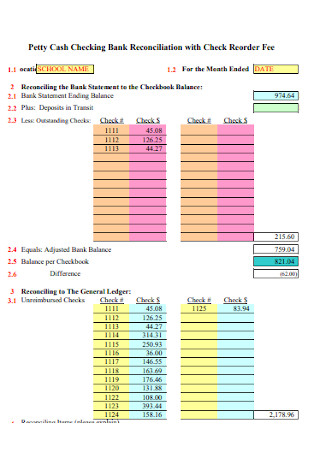
Petty Cash Checking Bank Reconciliation
download now -

Bank Pass Book Reconciliation Statement
download now -

Printable Bank Reconciliation Statement
download now
What Is a Bank Reconciliation?
A bank reconciliation is a method that you can use to reconcile your bank’s book of records and your business accounting records, allowing you to take into account the discrepancies. This process involves checking your bank statement transactions as it contains the breakdown of all the transactions relevant to your business’ bank account and comparing them to your records to determine if the records of your bank are accurate.
What Is a Bank Reconciliation Statement?
Unlike the bank statement, a bank reconciliation statement contains the adjusted transactions. It means that any outstanding checks and withdrawals and other transactions that may not appear in your bank statement will already be accounted for in the statement. It will also include all the charges deducted from your account and interest earned periodically.
How to Do a Bank Reconciliation?
Just like writing a thesis statement, bank reconciliation has certain steps that you must follow to ensure the accuracy of your document.
1. List Down the Bank Records
The basis of your reconciliation is the records that your bank holds and the best way to get a copy of these records is through a bank statement and if you are wondering what would happen if the bank doesn’t provide you with a statement, that cannot be. Unless there are no transactions that occurred within the reported month of the statement, the bank is required to send you a monthly statement of your checking or savings account. Take note as well that your bank is required to send you a quarterly bank statement, regardless if no deposits and withdrawals are happening within the reported months. If you received the bank statement through email. You just have to download it. If it’s possible, you can make the necessary edits directly to the document. If you are using a template, which we gathered samples in the previous section, you can list down all these transactions to your template.
2. Retrieve Your Business Records
As a businessman, you should take note of the transactions happening relevant to your business. These transactions may involve the expenses and sales that your company is making. We will use these records in the next steps. It would be easier if your business records are summarized in a spreadsheet file, such as Microsoft Excel and Google Sheet. You can also read our article about sample income and expense statements to know more about how to use this tool.
3. Check the Ending Balance
There’s a big chance that your bank statement and your business records won’t match. The best way to start determining the differences is through the ending balance. If the ending balance of both statements has a big difference, don’t panic just yet. You are just getting started. There could be explanations for the big gap.
4. Scan Your Bank Deposits
Go over the bank deposits listed in your business records. List down the items that your book of business records has, but your bank statement doesn’t to your bank reconciliation file. These records can be sales, interests, refunds, etc.
5. Check Your Income
Separately, you need to go over the income in your book of records and compare it to the bank statement records. If the item in your book does not reflect in your bank statement. Take note of it and figure out what happened to these expected deposits. It may be because it is not yet reflecting in your account if it occurred within 24-48 hours or the payment that your customer made through check bounced. To verify what really happened, check your transaction history and if necessary call your bank.
6. Check Your Withdrawals
Your book of records should be accurate as well. Use this opportunity to check for any transactions that your team failed to account for. You should also take note of the bank fees, which, most likely, you can only see through the bank statement. The same with the withdrawals, you should check for any unaccounted expenses and withdrawals and determine what happened.
7. Check Your End Balance
After you take into account all the transactions, the total end balance of your business records and bank statement should already match at this point. If not, then, you must have missed something. Go back to your list of transactions and determine where you went wrong.
Alternatively, to make your life easier, you can skip these steps by using bank reconciliation software. Many bank reconciliation software partners with banks to receive all the bank transactions in a secure line, allowing you to easily do the reconciliation process. Most bank reconciliation software has useful features, such as indications that the bank transaction entry matches your business record. It may also prompt you to enter certain information about certain transactions.
What Are the Uses of Bank Reconciliation?
Doing bank reconciliation gives you an edge in materializing your business and marketing plans because it ensures that the financial information of your business is accurate. In this section, we will discuss how Bank Reconciliation maintains the accuracy of your business financial information.
Bank Reconciliation Allows You to Spot Errors: Although being accurate should be practiced in the business all the time, at times, human errors, such as double payments, missed payments, and calculation errors are inevitable, and conducting a bank reconciliation allows you to spot these errors and mitigate them as soon as possible.
Bank Reconciliation Contains Bank Fees and Penalties: To take into account all of the transactions of your business, bank fees and penalties must be included. However, the only way to check these transactions is by checking the transaction history, which you may easily miss. Fortunately, since all the transactions will be accounted for during the bank reconciliation, you can easily add the bank fees and penalties to your business records.
Bank Reconciliation Allows You to Spot Suspicious Transactions: Cyberattacks, such as malware attacks are very common in any type of business. These cybercrimes intend to steal confidential records saved in the businesses’ databases. In fact, according to Joseph Johnson’s report in Statista on March 3, 2021, last year(2020), a total of 1,001 data breach cases have been recorded in the United State with over 155.8 million affected people. However, as if stealing confidential records is not bad enough, cybercriminals can also make fraudulent transactions once they are in your system or the bank’s, and with your many transactions, you may not detect these fraudulent transactions if you don’t do bank reconciliation.
Bank Reconciliation Serves as the Tracker for the Business’s Accounts Payable and Receivables: Part of the process of executing the performance plan of your business is to account for the Accounts Payable and Receivables and although there are other tools that you can use to do that, ensuring its accuracy is empirical. By doing bank reconciliation, you can ensure that the data that you have is 100% accurate.
FAQs
What is a deposit in transit?
In many cases, transactions occur at the end of the month. With the long duration of some transactions, it may appear in their system beyond the cut-off hour. If that’s the case, the transactions will be carried off to the next bank statement. These transactions are called deposits in transit. In the meantime, these transactions will appear in the bank reconciliation report as reconciled items. Another example of a deposit in transit is when a customer payment needs to be sent manually via mail, which may take days to arrive at the bank. The payment will be referred to as a deposit in transit until it arrives at the bank.
What is an outstanding check?
An outstanding check is a check payment that has been issued by the customer but has not yet been deducted from the customer’s funds. By the end of the month, if this transaction will not appear as cleared in the bank, it will not reflect this month’s bank statement. In this case, you will add this transaction as a reconciled item in your statement.
What is a NSF check?
Part of doing business is encountering situations where the issued check, may it be from the customers or even from you would bounce. Most likely, it is due to insufficient funds. In banking, we call this an NSF Check or Not Sufficient Funds Check. If this is the case, you will need to contact the issuing entity to solve this matter. If your company is at fault, you can choose other means of paying, such as paying in cash or simply replenish your account.
How Often Should You Do Bank Reconciliation?
It depends. If you rely on the records that the bank statement provides, then you may have to do the bank reconciliation periodically. It can be weekly, monthly or quarterly. Doing a bank reconciliation annually can be a quite tedious job. We highly advise you to do it monthly. If you are dealing with several transactions every day, we highly advise you to reconcile your bank every day or week. In this case, it will be easier for you to address the questionable transactions and if your business plan heavily relies on the summary of your daily transactions, doing it as often as possible is more highly advised. It is also important to note that you, as a business manager, may have to use the data that you have gathered even after it serves its main purpose. Therefore, just like your other weekly reports, you have to compile these reports as monthly journal entries.
What Is a Bank Statement?
A Bank Statement is a tool that you can use for bank reconciliation, which outlines the summary of the transactions occurring within a period. Prepared and sent by the bank, a bank statement includes transactions, such as withdrawals and deposits that you execute. At times, it also includes banking fees and penalties deducted from your account and the interest you earned.
How Does a Bank Distribute a Bank Statement?
Just like a business marketing plan utilizing online marketing strategies to expand their target customers, banks also adapt to utilizing various mediums to easily distribute bank statements, which is also a great way to improve customer service. These mediums are as follows:
Visiting the Bank
Normally, if you have a concern with your bank account you can drop by their office and have them address your concern. That includes requesting a bank statement. Surprisingly, many people still prefer doing banking transactions in person. However, if you are a busy person, this job can be unnecessarily tiring because there are other ways to do it more easily.
Bank’s Online Portal
Nowadays, to gain a competitive edge, most banks offer their clients an option to do banking transactions online. This option may be a very convenient option for you because you don’t have to wait in line to deposit money or buy something. You also have the option to view your bank statement anytime. Alternatively, you can view the transaction history for more updated information.
Mailing Service
Did you know that according to an article posted in Statista on March 17, 2021, the mail volume of U.S. Postal Services (USPS) is gradually declining? It started after its peak, which is 2006, where the mailing service managed to deliver 213 billion units. In 2020, they only managed to deliver 129.2 billion units, which is the lowest since 2004. This indicates that consumers and businesses have shifted their means of sending their mails. Nonetheless, while a printed version of a bank statement is way more convenient, many people still prefer to receive their copy via mail because it serves as a reminder that they have to check these papers. However, if it means doing other tasks, such as bank reconciliation, then this option may not be for you. The next one may.
Receiving your bank statement via email may serve the same purpose mail. It can serve as a reminder that you have to check your bank statement. The difference is you instantly receive it the moment the bank sends it to you. Plus, if you properly use it, you lessen the possibility of getting your copy lost. While it saves the bank money for not utilizing a mailing service, it also saves you from the litters.
As a businessman, you need to use the most accurate data when conducting business impact analysis or any type of analysis pertaining to business improvement. Conducting a bank reconciliation for the bank statement will increase the accuracy of this data. In this article, we have covered the most important information that you need to know about bank reconciliation.